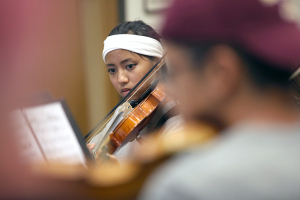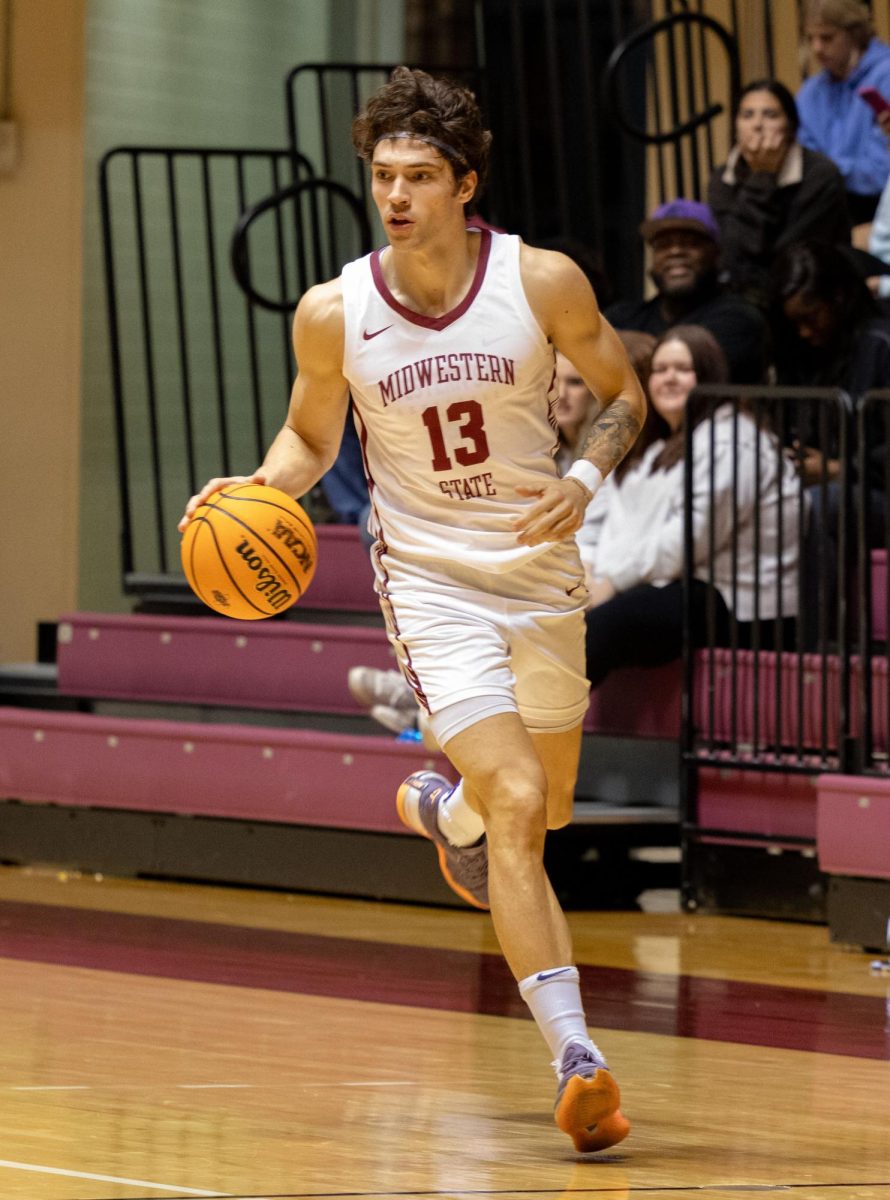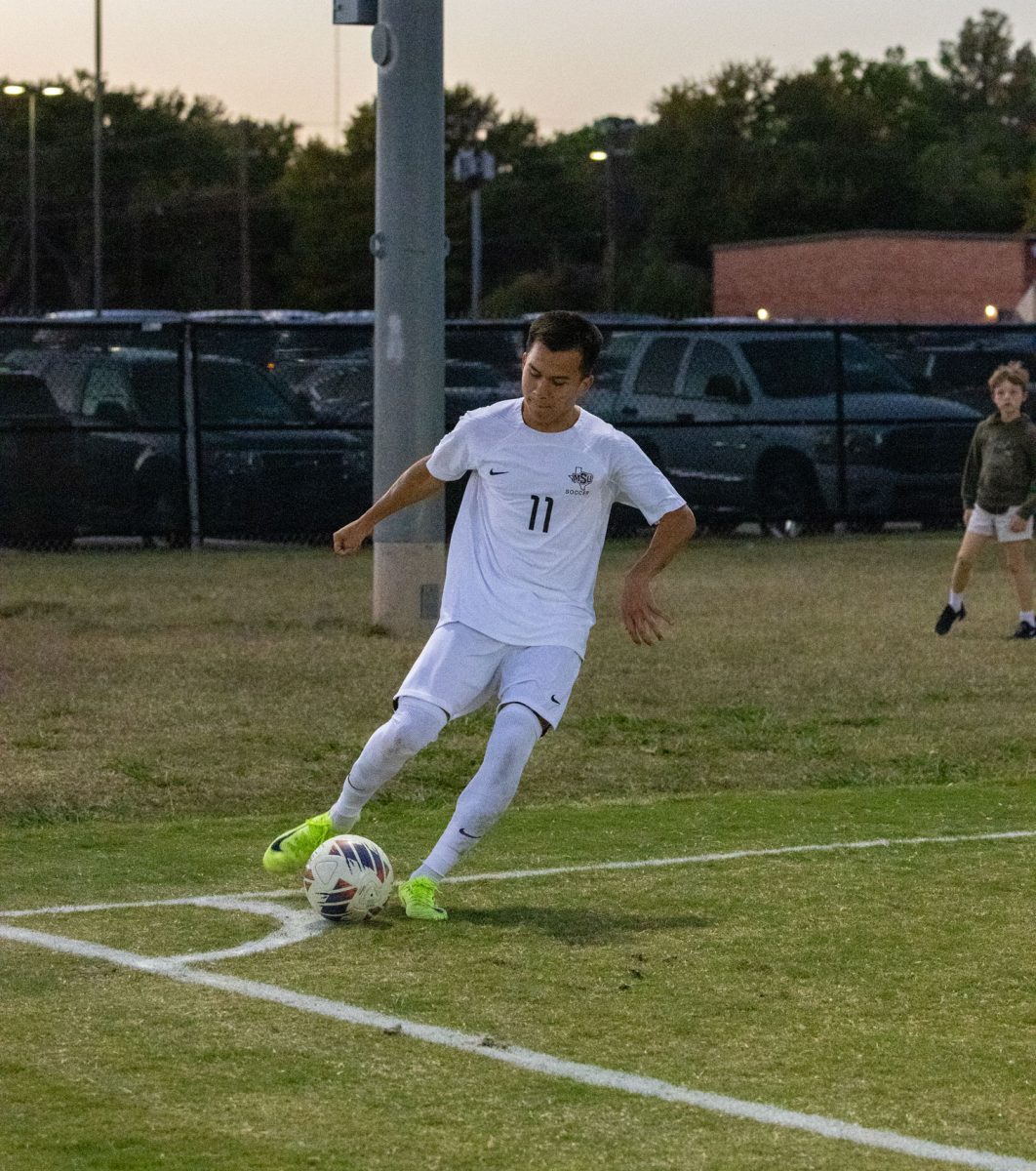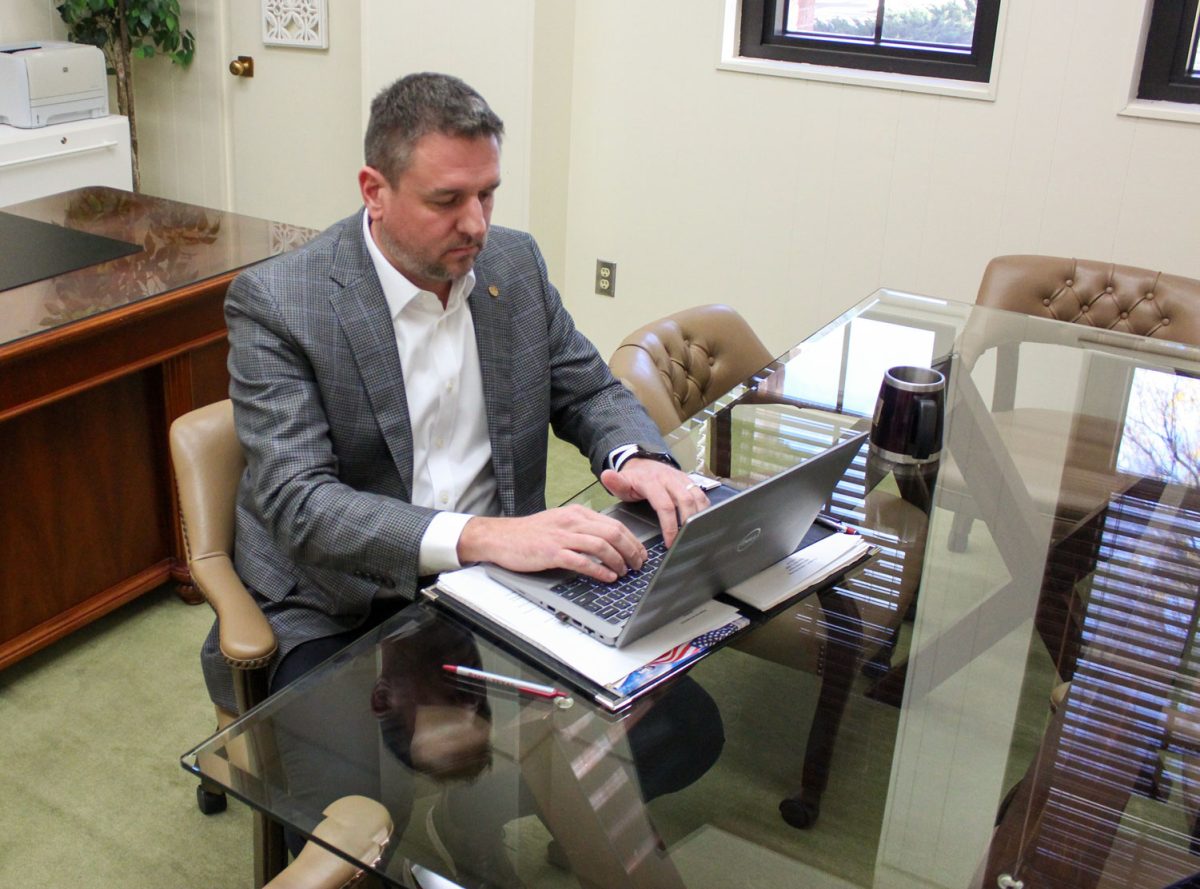
It wasn’t a full philharmonic.
And the 15-some members of the orchestra that performed Oct. 1 hadn’t been playing together long.
In fact, for nearly half a century MSU hasn’t even had an orchestra, so this was a new opportunity for players of string instruments to play and for wind players to play as part of an orchestra.
“We didn’t want to turn students away,” Lutrell said, “They were all very talented musicians. We thought this would be a prime opportunity to bring back an ensemble that had been cut from the program.”
Matthew Lutrell, director of bands, said the original had been disbanded as the program shrank.
“We’re not doing that anymore, we’re actually getting bigger and bigger,” he said.
The decision to bring the orchestra back was “a consensus” between members of the faculty on campus, Lutrell said. There were students interested in attending MSU for music, but there was no outlet here for them to pursue. Now, they have enough musicians to perform a variety of largely classical pieces.
“It’s good to start out with classical, because it’s a little bit more straightforward on the instrument. It doesn’t require any extended technique,” Lutrell said.
Depending on the musical instrumentation, the orchestra plays classical pieces, but will move on to romantic and 20th century music in the spring.
“We just use the musicians that we need for a representative piece,” Luttrell said.
Christelle Billan, a music performance and biology freshman, has been playing the violin for nine years. She is working on Mendelssohn violin concerto for her jury and recital attendance. She will perform this piece in front of private instructors for a grade, like a final.
When Billan first heard the sound of the violin, she wanted to learn how to play it.
“Ever since I first heard the instrument, I instantaneously fell in love with its sound and the beautiful tone that it creates,” she said. “For me, it was captivating.”
Billan said she joined the orchestra because it would be a first step into creating more string recognition for MSU.
“We’re getting there,” she said.
Billan said the hardest thing about being in the orchestra is managing her time between music and school. To do so, she sets goals for what she wants to accomplish in a set time.
The orchestra practices for two and a half hours once a week, so the long hours practicing in and out of rehearsal are hard on Billan.
“It’s really tiring, because I have all my classes beforehand, and then I have to play for a really long time,” she said.
However, she said, the best things about orchestra outweighed the difficulty of time managing.
“Being around musicians who love doing the same thing that you do, and feeling the energy radiating off them is inspiring,” she said.
And Lutrell added there are two really awesome things about being in orchestra: playing iconic music and looking cool.
“When the strings are moving their bows across the strings, orchestras look cool when they play,” he said. “Orchestras may be playing something very easy, but it looks hard.”












